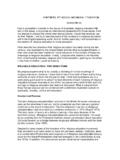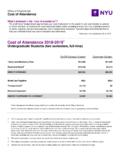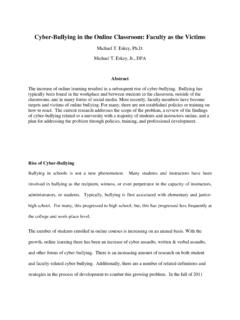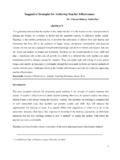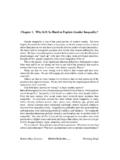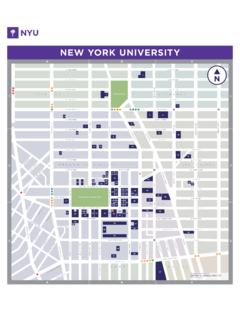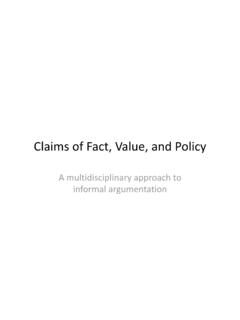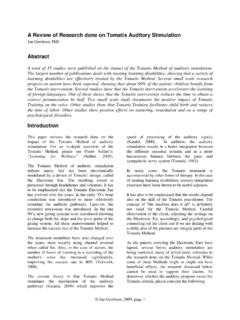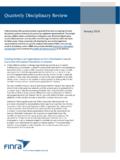Transcription of Time Discounting and Time Preference: A Critical …
1 Time Discounting and Time Preference: A Critical review Shane Frederick Sloan School of Management Massachusetts Institute of Technology George Loewenstein Department of Social and Decision Sciences Carnegie Mellon University Ted O'Donoghue Department of Economics Cornell University January 30, 2002. Acknowledgements: We thank John McMillan, David Laibson, Colin Camerer, Nachum Sicherman, Duncan Simester, and three anonymous referees for useful comments. We thank Cara Barber, Rosa Blackwood, Mandar Oak, and Rosa Stipanovic for research assistance. For financial support, Frederick and Loewenstein thank the Integrated Study of the Human Dimensions of Global Change at Carnegie Mellon University (NSF Grant SBR- 9521914), and O'Donoghue thanks the National Science Foundation (Award SES-0078796).
2 Mail: Shane Frederick / Sloan School of Management / Massachusetts Institute of Technology / Room E56-329, 38. Memorial Drive, Cambridge, MA 02142-1307; George Loewenstein / Department of Social and Decision Sciences / Carnegie Mellon University / Pittsburgh, PA 15213-3890; Ted O'Donoghue / Department of Economics / Cornell University / 414 Uris Hall / Ithaca, NY 14853-7601. Email: and Web pages: ; ; and 1. 1. Introduction Intertemporal choices decisions involving tradeoffs among costs and benefits occurring at different points in time are important and ubiquitous.
3 Such decisions not only influence an individual's health, wealth, and overall happiness, but, as Adam Smith first recognized, may also determine the economic prosperity of nations. In this paper, we review empirical research on intertemporal choice, and present an overview of recent theoretical formulations designed to address the insights gained from this research. Economists' attention to intertemporal choice began early in the history of the discipline. Not long after Adam Smith called attention to the importance of intertemporal choice for the wealth of nations, the Scottish economist John Rae was already examining the sociological and psychological determinants of these choices.
4 In Section 2, we briefly review the perspectives on intertemporal choice of Rae and 19th and early 20th century economists, and describe how these early perspectives interpreted intertemporal choice as the joint product of many conflicting psychological motives. All of this changed when Samuelson proposed the discounted-utility (DU) model in 1937. Despite Samuelson's manifest reservations about the normative and descriptive validity of the formulation he had proposed, the DU model was accepted almost instantly, not only as a valid normative standard for public policies ( , in cost-benefit analyses), but as a descriptively accurate representation of actual behavior.
5 A central assumption of the DU model is that all of the disparate motives underlying intertemporal choice can be condensed into a single parameter the discount rate. In Section 3, we examine this, and many other assumptions underlying the DU model. We do not present an axiomatic derivation of the model, but instead focus on those features which highlight the implicit psychological assumptions underlying the model. Samuelson's reservations about the descriptive validity of the DU model were justified. Section 4 reviews the growing list of DU anomalies patterns of choice that are inconsistent with the model's theoretical predictions.
6 Virtually every assumption underlying the DU model has been tested and found to be descriptively invalid in at least some situations. Moreover, as we discuss at the end of the section, these anomalies are not anomalies in the sense that they are regarded as errors by the people that commit them. Unlike many of the better-known expected- utility anomalies, the DU anomalies do not necessarily violate any standard or principle that people believe they should uphold. 2. The insights about intertemporal choice gleaned from this empirical research have led to the proposal of numerous alternative theoretical models, which we review in Section 5.
7 Some of these modify the discount function, permitting, for example, declining discount rates or hyperbolic Discounting . Others introduce additional arguments into the utility function, such as the utility of anticipation. Still others depart from the DU model more radically, by including, for instance, systematic mispredictions of future utility. Many of these new theories revive psychological considerations discussed by Rae and other early economists, but which became extinguished with the adoption of the DU model and its expression of intertemporal preferences in terms of a single parameter.
8 In Section 6, we review attempts to estimate discount rates. While the DU model assumes that people are characterized by a single discount rate, this literature reveals spectacular variation across (and even within) studies. The failure of this research to converge toward any agreed upon average discount rate stems partly from differences in elicitation procedures. But it also stems from the faulty assumption that the varied considerations that are relevant in intertemporal choices apply equally to different choices and, thus, that they can all be sensibly represented by a single discount rate.
9 Throughout the paper, we stress the importance of distinguishing among the varied considerations that underlie intertemporal choices. We distinguish time Discounting from time preference. We use the term time Discounting broadly to encompass any reason for caring less about a future consequence, including factors that diminish the expected utility generated by a future consequence, such as uncertainty or changing tastes. We use the term time preference to refer, more specifically, to the preference for immediate utility over delayed utility. In Section 7, we push this theme further, by examining whether time preference itself might consist of distinct psychological traits that can be separately analyzed.
10 Section 8 concludes. 2. Historical Origins of the Discounted Utility Model The historical developments which culminated in the formulation of the DU model help to explain the model's limitations. Each of the major figures in the development of the DU model . John Rae, Eugen von B hm-Bawerk, Irving Fisher, and Paul Samuelson built upon the theoretical framework of his predecessors drawing on little more than introspection and personal 3. observation. When the DU model eventually became entrenched as the dominant theoretical framework for modeling intertemporal choice, it was due largely to its simplicity and its resemblance to the familiar compound interest formula, and not as a result of empirical research demonstrating its validity.
